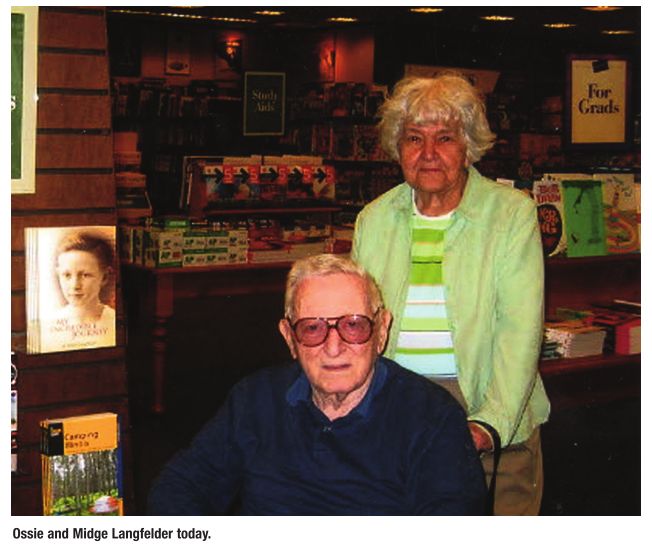
By 1944, Langfelder was eager to join the Army and fight for the U.S., even though he knew he had at least one cousin who was fighting for Germany. After two years in the Pacific theater of the war, he came back to Springfield. He was 20 years old. Within a week he was working at a downtown men’s clothing shop and buying chocolate bars at a nearby movie theater. The pretty teenage girl running the candy counter was Mary Agnes “Midge” Dunham. They were married five years later.
“I was attracted to him because I knew he was good,” says Midge as they sit in their living room. “I guess you could say it was that thing they call love.”
“That’s the first time I ever heard her say that,” says Ossie. “I’ve been waiting 59 years to hear it.”
To celebrate the couple’s 25th wedding anniversary in 1977, their children gave them a trip to Vienna. Ossie struggles a bit with his emotions when he talks about going back to the apartment building where his family once lived.
“It was the first time I had been back,” he says. “It was as if I had only left a few days earlier.”
“We went to our old apartment building, and my aunt’s nameplate was still on her door. The grocery store where we bought our food was still there, and the grocer who ran it went into the back room yelling ‘Die Langfelders sind hier!’ Out came the same grocer who served my family 40 years before. We both cried. Then we had a glass of wine.”
The book focuses surprisingly little on Langfelder’s engineering career, or his two terms as city streets commissioner or as Springfield’s mayor from 1987 to 1995. He jokes that if he had two good legs, he’d run again, but he says politics is serious business and he worries about the inability of national leaders to work together for the good of the country.